Intro
I did a post some time back about repairing a portable air conditioner unit. They’re not very complex bits of kit and, unless the compressor has broken, they’re usually very easy and cheap to repair.
Following the 2 days of apocalyptic summer the UK had to endure in July 2022, I went looking for another portable AC unit to keep my office cool whilst working from home during the summer days. And I found a stonker! A broken AirForce GPCN12A5NK3BA, for only £20. It’s a 12,000 BTU unit with a huuuge fan that might blow the roof off, if you’re not careful 😀
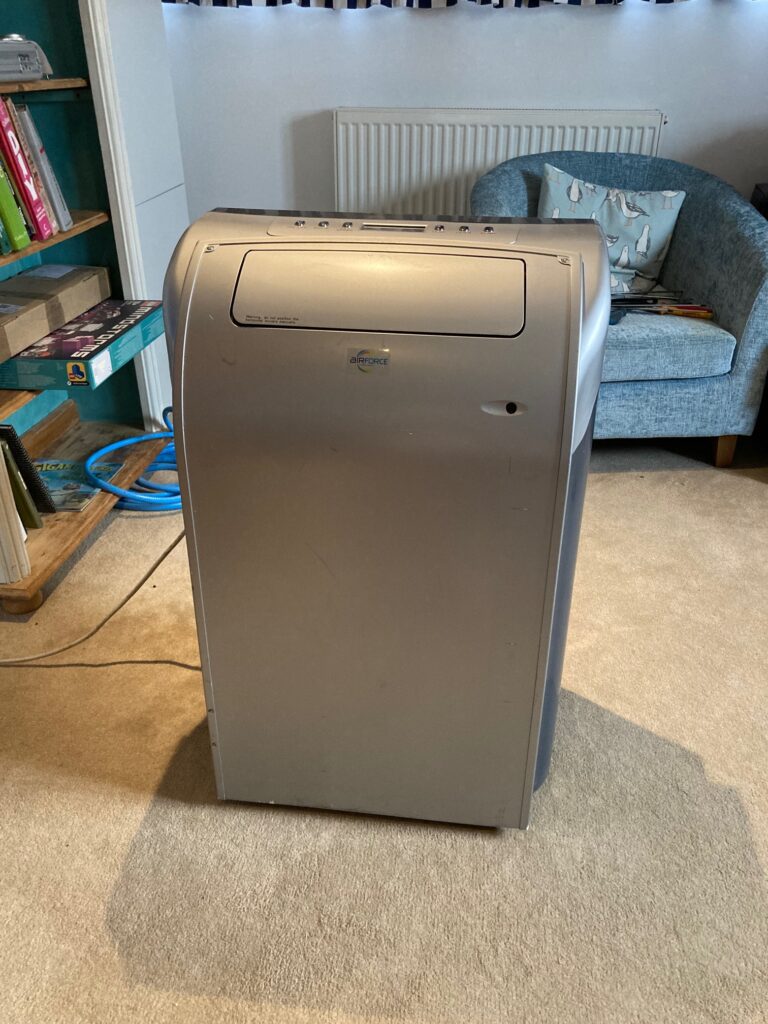
Opening it Up
This unit is remarkably simple to open up. It has 2 “security” type screws on the top that you need a fork shaped screwdriver to open and then two Phillips screws on the bottom. The front panel then lifts up and slides off. The front panel has a motorised louvre vent which you simply need to unplug two connectors from to fully detach it.
The PCB can be exposed by removing the 4 screws from the metal cover with the circuit diagram on it.
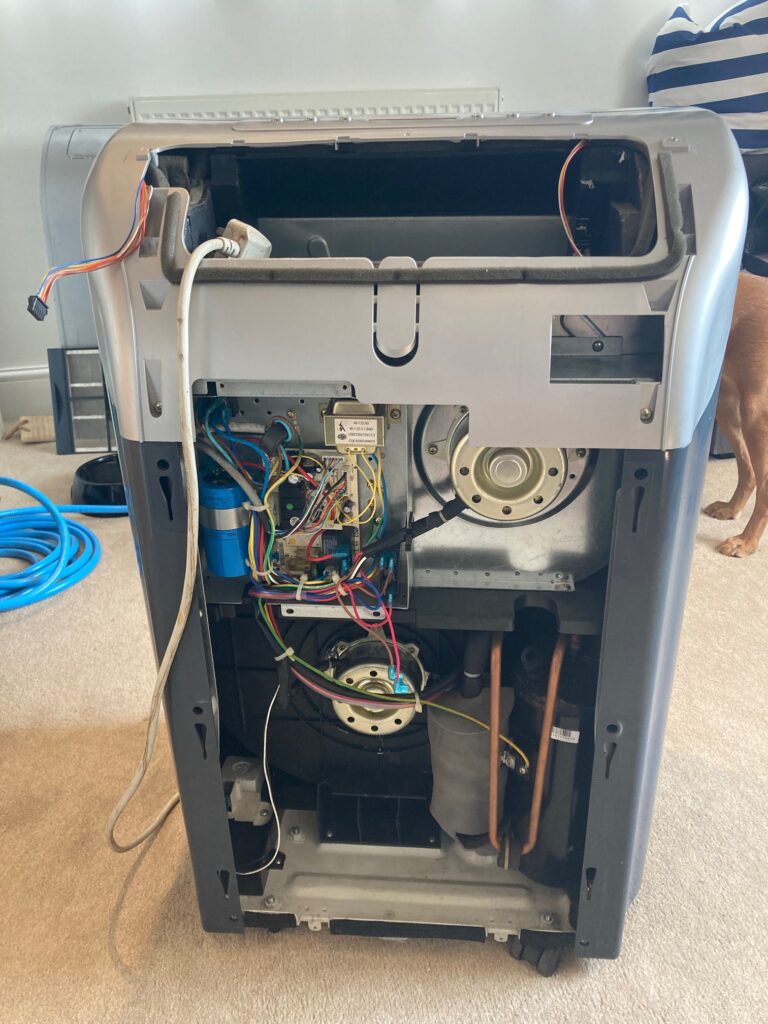
I could also see that the heatsink on the back was clogged full of dust. Removing the back was slightly more involved but it was just a case of removing a multitude of screws and lifting the cover off. It can be easily cleaned with a soft tooth brush, very careful vacuuming with a brush attachment, and a fin comb if you’re feeling fancy.
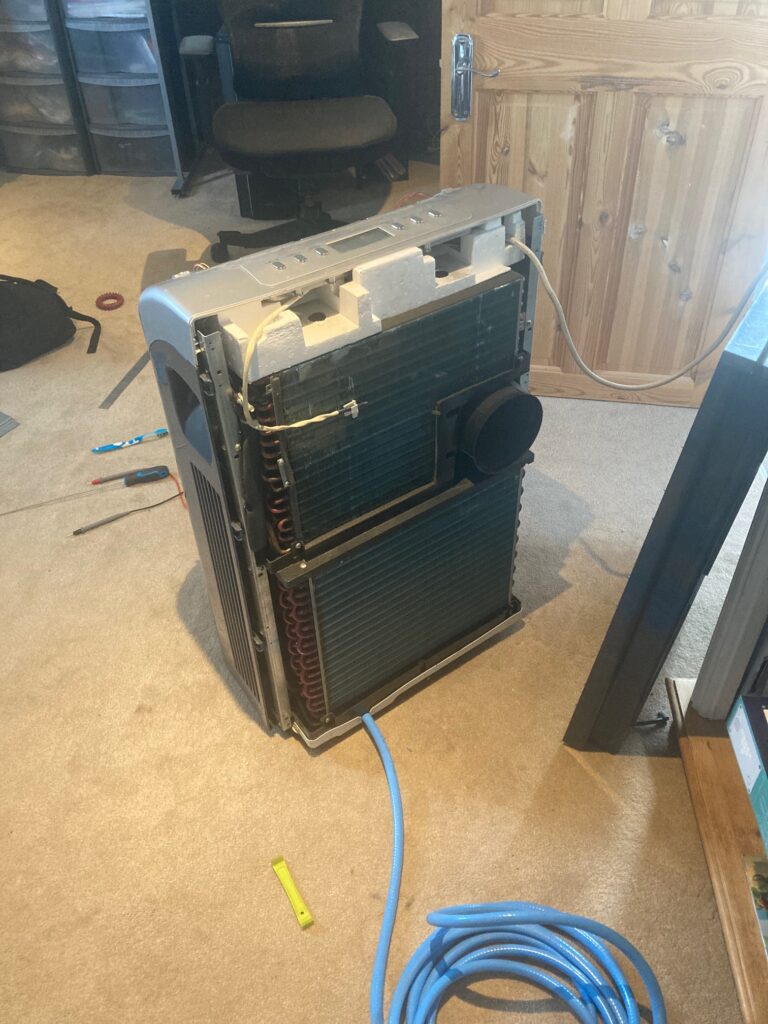
Diagnostics
When I got the unit and plugged it in, the top display turned on but none of the fans nor the compressor turned on. It was feasible that all 3 of the large capacitors which helped these things start up had died… but it felt unlikely. I tested each of the capacitors and found that only one of them was dead. This turned out to be the capacitor which powered the fan which blows cold air out into the room. Upon removing this capacitor, it was clear that it had dramatically blown as it had leaked a sort of molten plastic:
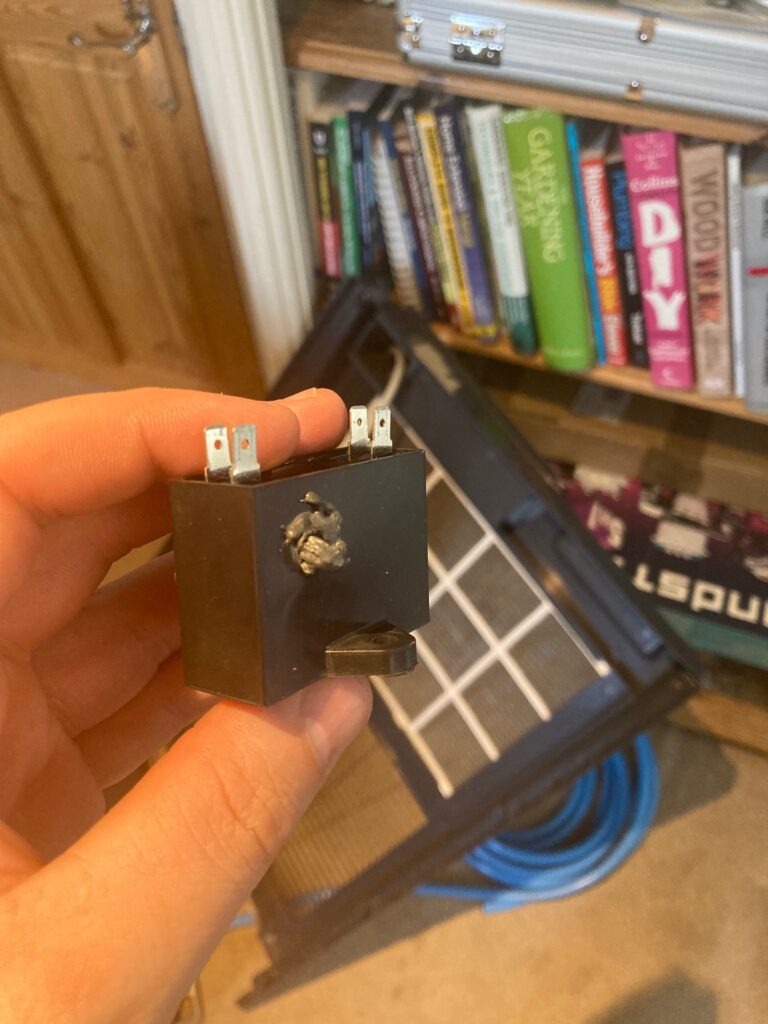
This capacitor was removed and a new one ordered but, given the others were OK, it clearly wasn’t the primary issue.
Next, I just followed the voltage on the PCB:
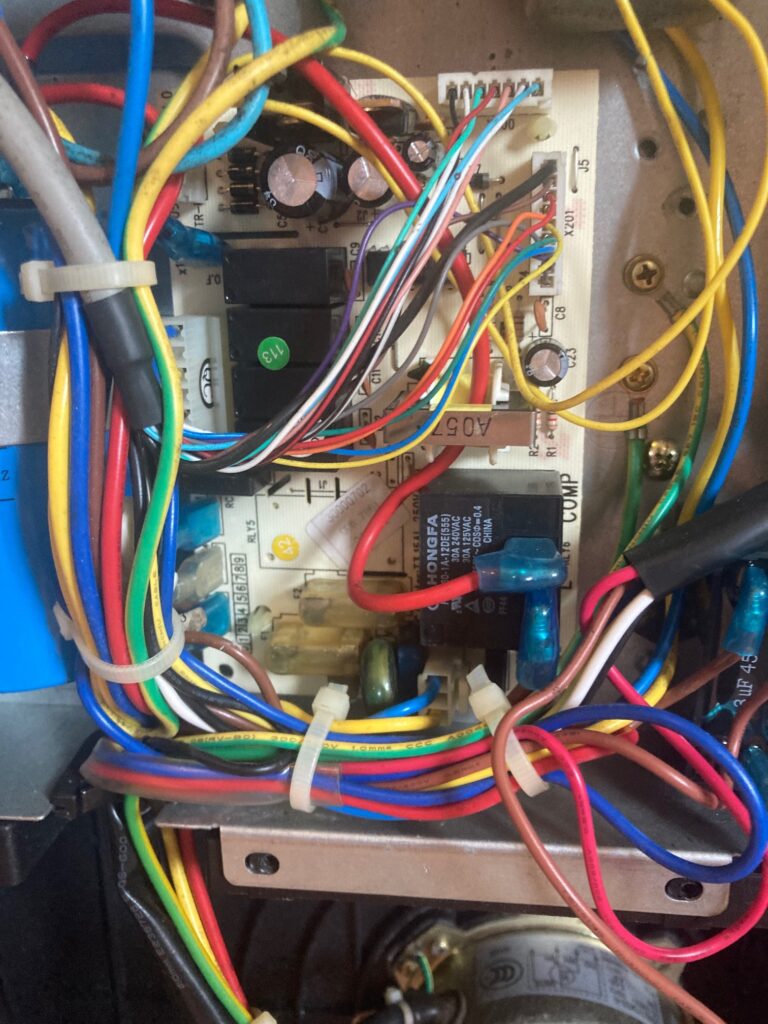
There was 240v coming into the connector block at the top of the unit so the next point to check was the two fuses you can see (covered in a yellow plastic shroud) at the bottom of the PCB. This is where I lucked out. As I poked the fuses with my multimeter, to establish the voltage, the unit beeped at me. It quickly became clear that the fuse holder contacts were dirty and weren’t making proper connection with the fuses. I removed the fuses, cleaned the contacts with a toothbrush and some Isoproyl, then put the fuses back in.
The unit now powered up, the compressor and exhaust fan ran ok. The top fan ran, slowly, if I gave it a prod. Once the new capacitor had been installed, the top fan ran perfectly on its own.
Venting Hot Air
On this unit, hot air vents out the back. The unit didn’t come with the original air hose. The vent hole is a standard 125mm size. I bodged an adaptor from a cheap 125mm “flange” and screwed it on. A 125mm hose attaches to that and vents out of the window.
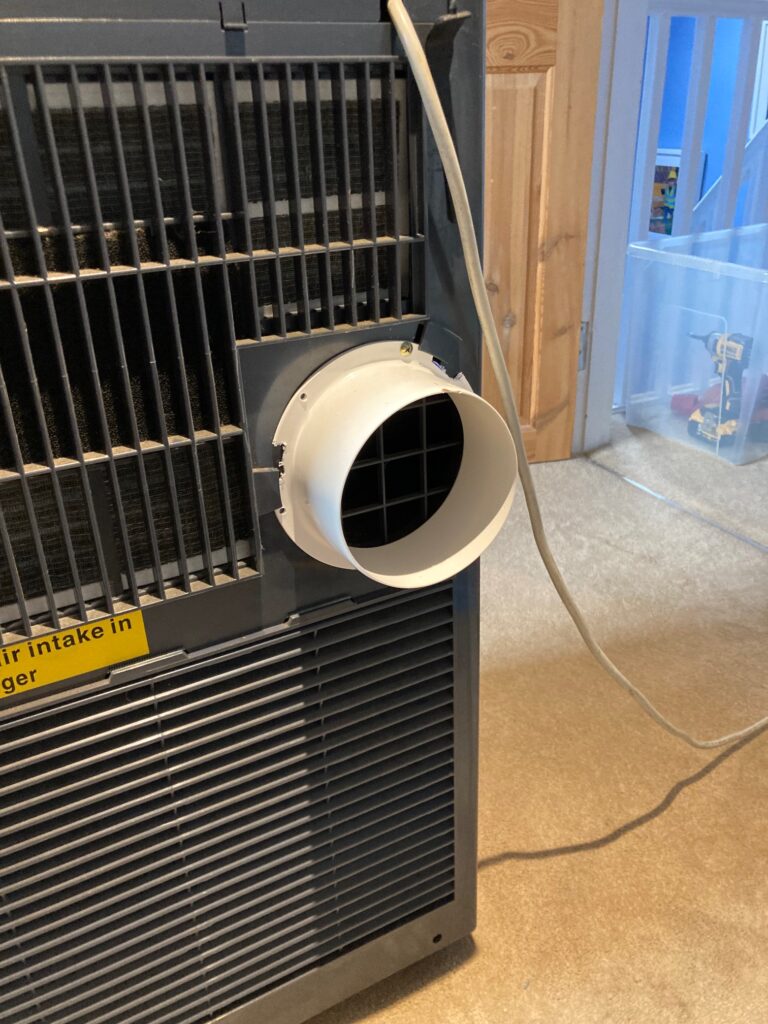
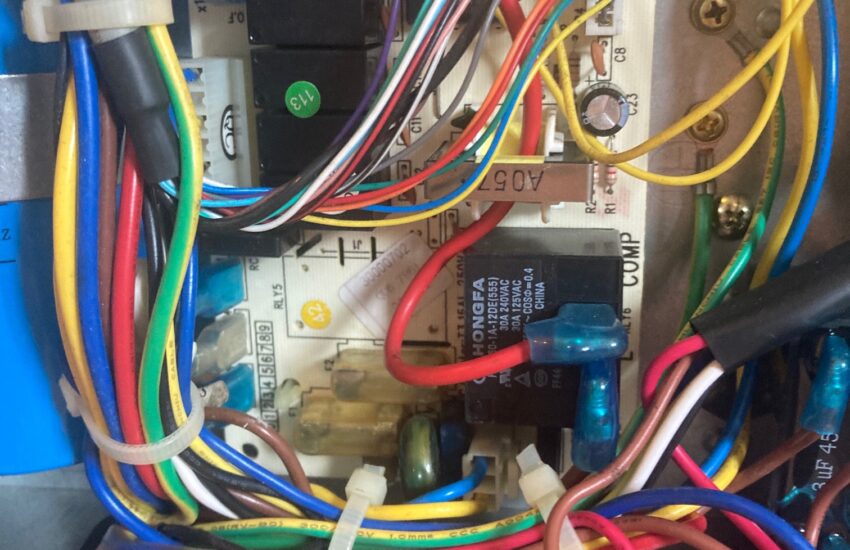
Hi Phil, any idea where I can find a coupler for the back of this air con unit to connect a standard exhaust hose?
I bodged an adaptor from a cheap 125mm “flange” and screwed it on. Hose just attaches to the flange with a large jubilee clip.
Hi, any ideas on where I can get a manual for this model? I search the Web and can’t find anything
hi Phil
i have the same model as this, a great unit, i have issue where when the unit is plugged in and is off the buttons will beep bethem self and and even turn on it self on.
also when the unit is on it cant be turned off via the buttons, and sometime can by remote, but the flap will close but the fan is still going so i just have to unplug it.
could offer advise on what it can be and how to fix.
Sounds like the controller. That’s the PCB at the top that the buttons are connected to. I’d start by taking it out and giving it a good clean with isoproyl
thank you so much, i did not use the unit for a few months and button issue stopped and was is working ok, lol i have a new issue now, when i switch the unit on it run fine for 10 mins with AC on and then the fuse in the plug blow, i put a new one in, but now it turns on ok but now the compressor kicks on for 2 sec or so and then goes off and will not stay on.
could this be a issue with a fuse maybe on board and do know which one to check please.
Is there a way to repair the venting fan on the Unit, it was working fine then a fan started sqealing and not the Unit doesn’t vent Air through the rear of the unit.
Have you tested the capacitor? If the fan itself is bad, you might struggle but it could well be the capacitor